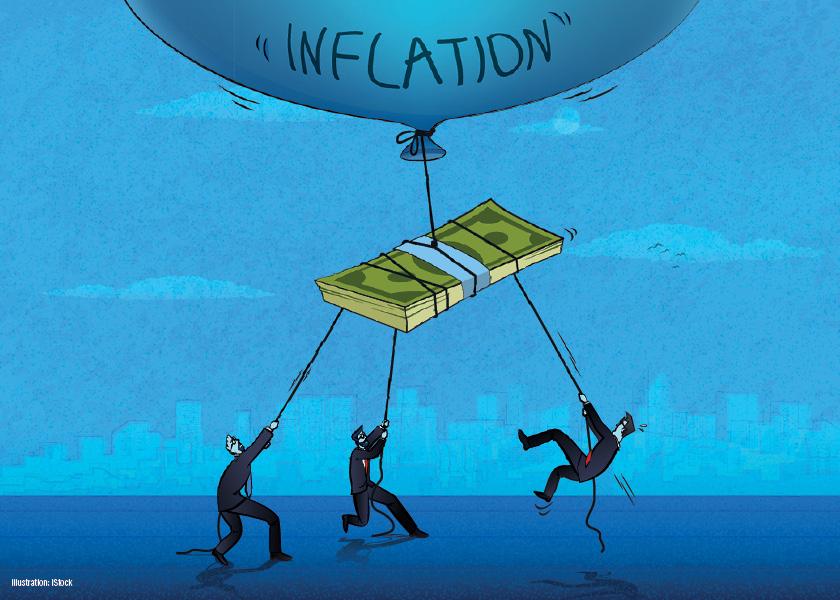Dollar Power Continues to Decrease: What Does That Mean for Pig Farmers?

Inflation has increased the cost of everything over the past 12 months. First described by many economists as transitory, the reality of higher prices and decreased purchasing power of the dollar has persisted. Even as the increase in pork production has dramatically increased over the past year, higher hog prices have provided for good margins for producers.
Cost of Production Continues Upward
Production costs of market hogs have risen dramatically, led by feed cost increases. The U.S. economy is driven largely by energy costs at its core. With higher energy costs rising for the past year, the impact to crop production has been enormous. Energy impacts on fertilizer costs and transportation costs are driving feed costs to record levels for producers.
The increased costs of producing pigs don’t stop there. In addition to feed costs, higher costs in labor, utilities, maintenance, repair, trucking and just about every input cost means the cost of production will reach record levels. If commodity prices were to settle near $7.00 corn, $475 soymeal and $4.75 diesel fuel – I expect that breakeven cost of production to top out at $190 to $200 per head ($90 to $95 per carcass hundredweight).
This level of production costs causes the industry to pause and determine the impact of supply and demand at levels it requires to maintain a reasonable profit margin over time. As a leading economist mentioned this week, it certainly “takes the bloom off” of $100 futures. That is well said and makes us think about the ability to sustain margins if costs don’t pull back over the next year.
Revenue on the Rise
Domestic demand has continued to be very strong for pork and supportive of higher prices. Retail scanner data collected nationwide on pork products continues higher. Pork prices in February were up 15% over the prior year. Retail beef prices were up 19% and composite broiler prices were up 14%.
The demand indexes for pork, beef and chicken were much higher than year-ago levels and obviously contributing to food inflation. The reduction in pork supply, from reduced sow numbers during 2020 and continued herd health challenges is also supporting pork prices. Pork production in the quarter ending in February was down over 400 million pounds (5.5%), according to USDA reports.
What Should Pork Producers Do?
Inflation has reached levels not seen in over 40 years and is affecting about every cost associated with pork production. To date, revenue has helped buffer the impact on our industry as meat prices continue to climb. This is the opportunity to make sure you have budgets in place to understand your farm costs and be in a position to lay off risk when it makes sense.
More from Farm Journal's PORK:
The Ukraine-Russian War: Rampant Inflation Puts Serious Squeeze on Disposable Income
Another Bullish Hogs and Pigs Report: How Long Will This Trend Last?
Mosquito-Borne Virus "Is a Nightmare" For Australian Pig Farmers







